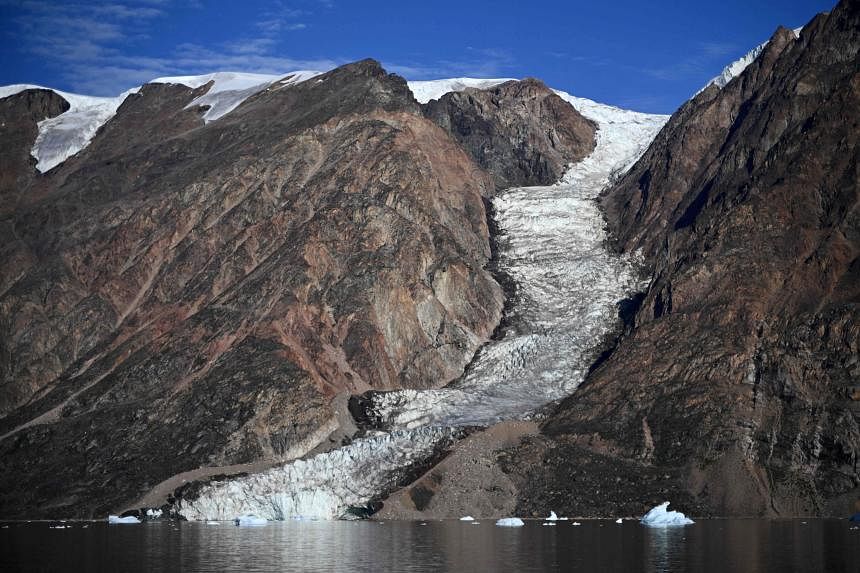COPENHAGEN – Global warming has increased the speed at which glaciers in Greenland are melting fivefold over the last 20 years, scientists from the University of Copenhagen said on Friday.
Greenland’s ice melt is of particular concern as the ancient ice sheet holds enough water to raise sea levels by at least 6m if it were to melt away entirely.
A study of a thousand glaciers in the area showed that the rate of melting entered a new phase over the last two decades, Assistant Professor Anders Anker Bjork of the Department of Geosciences and Natural Resource Management at the University of Copenhagen told Reuters.
“There is a very clear correlation between the temperature we experience on the planet and the changes we observe in how rapidly the glaciers are melting,” Prof Bjork said.
The glaciers on average decrease by 25m annually, compared with 5m to 6m about two decades ago, scientists concluded after studying the development of the glaciers over 130 years through satellite imagery and 200,000 old photos.
The world has already warmed by nearly 1.2 deg C above pre-industrial temperatures, and 2023 is “virtually certain” to be the warmest in 125,000 years, scientists from the European Union said earlier in November.
Lowering temperatures would require a global effort to minimise greenhouse gases in the atmosphere, said Professor Jorgen Eivind Olesen, director of the Climate Institute at Aarhus University.
“I believe we can prepare for those glaciers to continue to melt at increasing speeds,” Prof Olesen said.
Glaciers in Greenland are often studied to anticipate the effects of climate change on Greenland’s ice sheet.
“If we start to see glaciers losing mass several times faster than in the last century, it can make us expect that the ice sheet will follow the same path, just on a slower and longer timescale,” said Dr William Colgan, senior researcher at the Geological Survey of Denmark and Greenland.
The Greenland ice sheet contributed 17.3 per cent of the observed rise in sea level between 2006 and 2018, and glaciers have contributed 21 per cent. There are about 22,000 glaciers in Greenland. REUTERS

